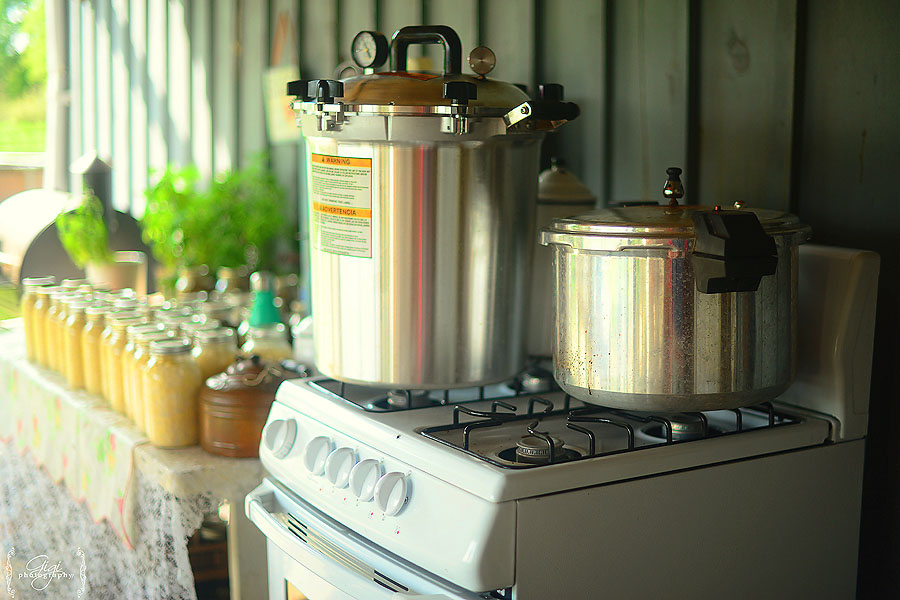
The table was laden with 260 cobs of fresh-from-the-farm corn. Picked by our neighbours just this morning, it was all ready for the yearly Provisional project of putting it away for winter (and spring and summer!). Thankfully, we had the help of some lovely friends (who came all the way from England!) to shuck all that delicious corn, as well as help me cut off all kernels and prepare it for the freezer. We settled in for a morning of work.
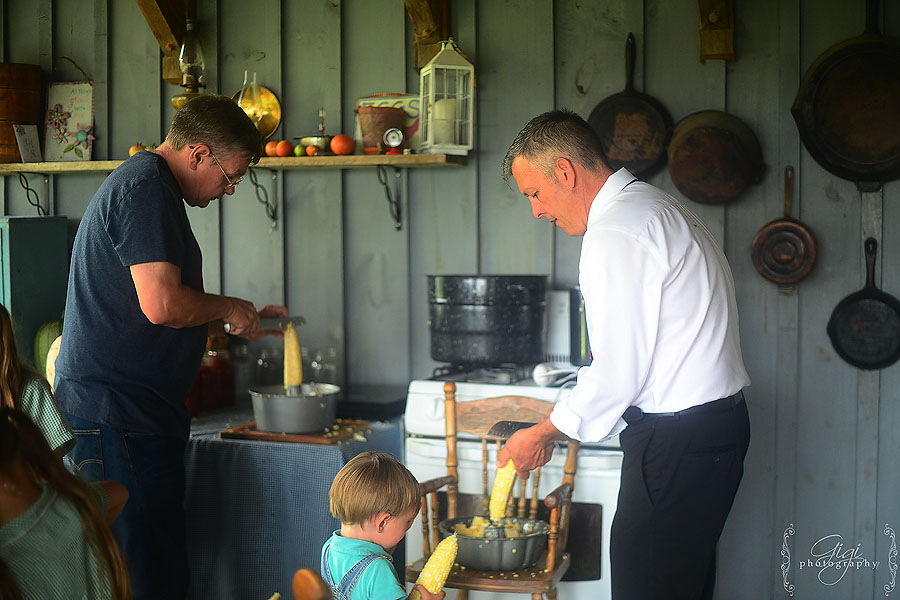
The corn juices were flowing and everyone was catching up on the yearly news with our friends and their family … we drank coffee and ate homemade butter tarts in between pulling off the tight husks, all the girls all helped, the boys played and napped … we took a break for lunch and then finished up about one hour after the lunch hour was finished. All in all, it did not take too long to prepare the corn with all that wonderful help.
But why bother? This is the question raised often to me, sometimes, I admit, even by my own husband. Why bother going through all that work? … growing the corn (or in this case, our friend grew it), shucking the corn, cutting the kernels off the cob, canning or freezing the corn, the cleanup, the sticky mess of corn juice everywhere … why bother when you can just go get a bag from the store in a quicker, easier fashion?
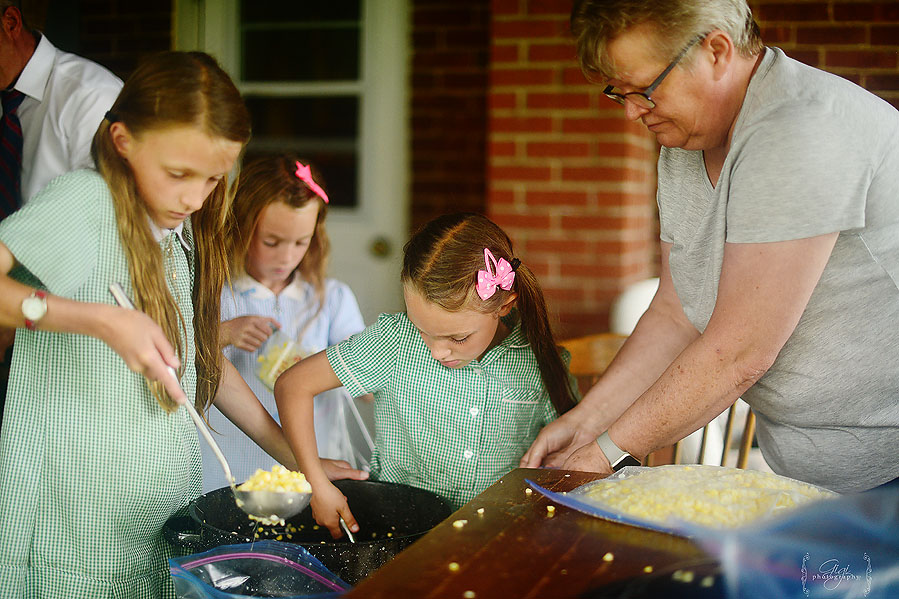
For starters … it truly is healthier. However, it is also cheaper than buying store bought corn. It is more time efficient for me (and in my opinion, time is pretty valuable!). It builds memories with those who are helping the project. It helps with a household skill (the girls will know how to preserve corn when they are older, if they choose to do so with their families). It slows down time … in a way … you need to be at home to do these kinds of projects.
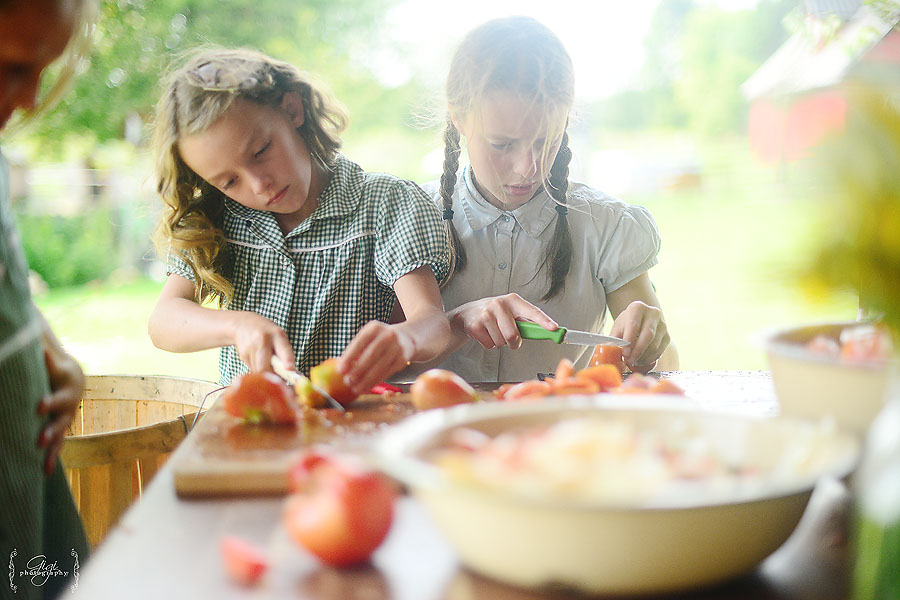
It’s different than regular life. It takes longer to prepare and handle the sharp knife needed to cut the golden kernels off the corn …yes, it’s faster to just grab a bag of frozen corn from your nearest supermarket but … look at it this way … a day spent with my children, working together, offers so much more. It trains our family to work together as a team. We have to learn how to get along, to enjoy the mundane – not all of life is a tea part or an exciting day at the beach. There’s hard work invovled, there’s boring work involved and sometimes, just sometimes, there’s gardening, weeding, watering or canning involved. 🙂
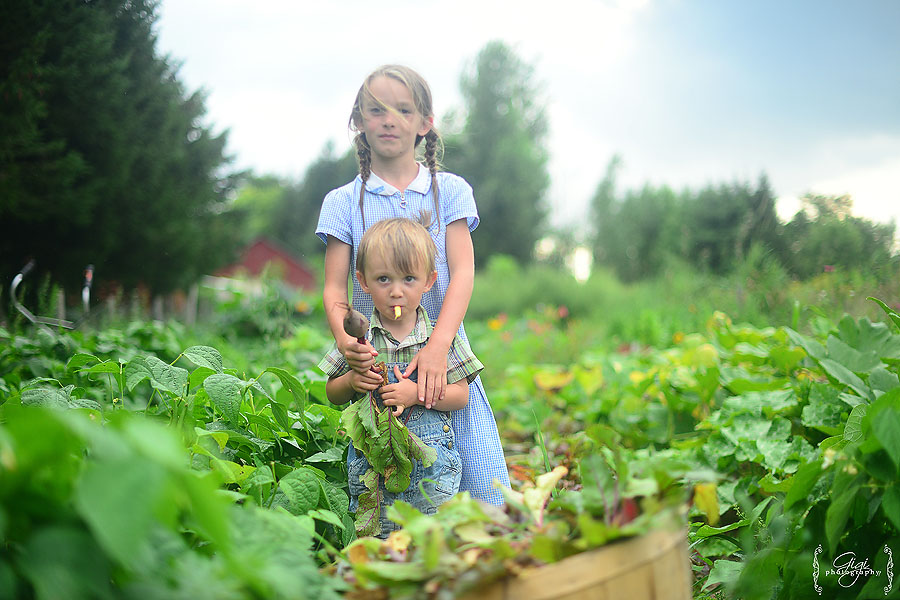
This is a life skill, in some small way, to work on such projects and not complain or whine during the project. Later, with utter satisfaction, you may in turn see the end results on your dinner plate later in the season. In the winter, when the girls thank me for dinner, I will say, “And thank you to YOU! You helped with this food last year!” Whether it’s canning green beans or shucking corn, we are all involved.
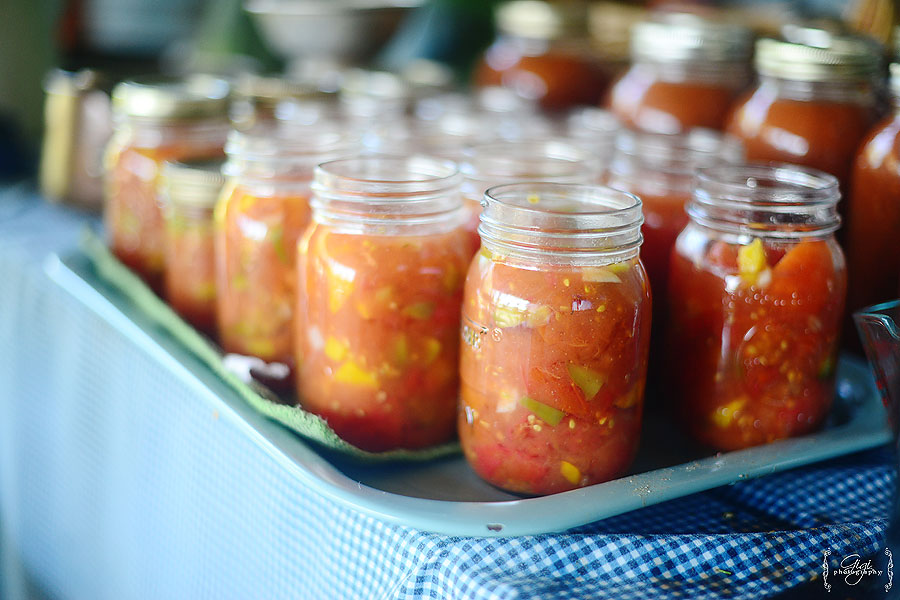
We have also finished up most of our spaghetti/tomato sauce needs. We have moved on to salsa and ketchup.
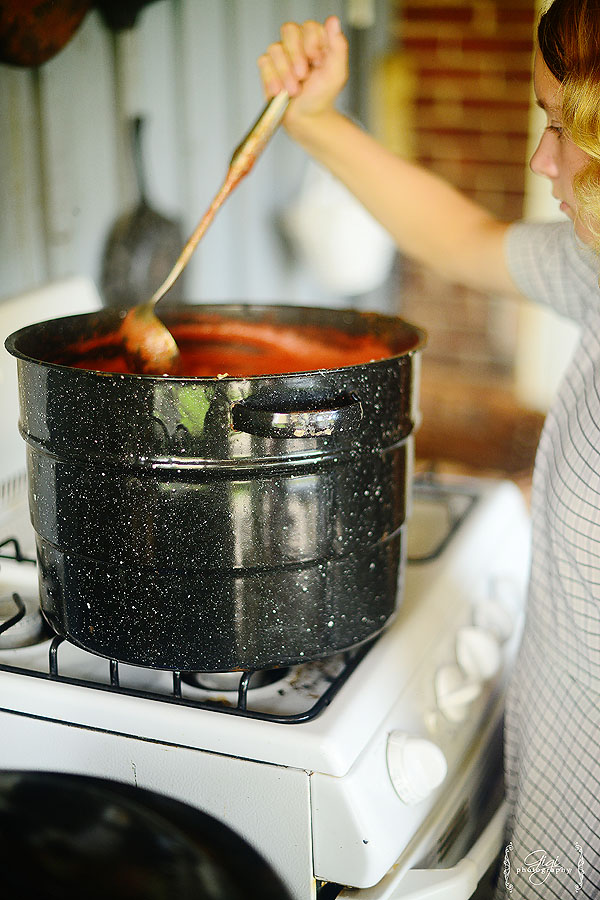
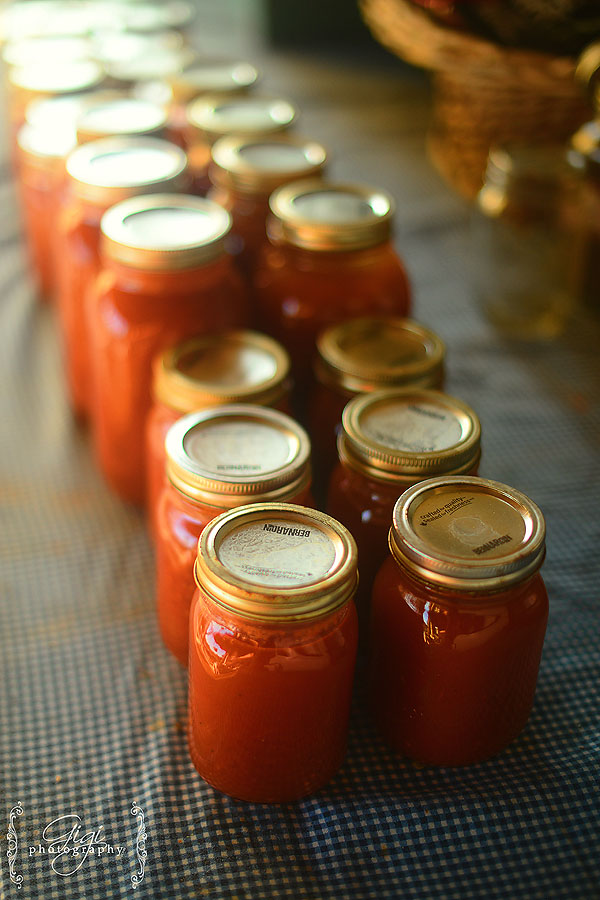
Some days, we simply cut and dice the tomatoes and start boiling them down in a huge pot on the propane stove. This means the big work is done – the next day, I add the seasoning and spices and work on preparing the actual product. It saves energy and allows me to work on other projects or tend to my home as needed during the day. It spreads the workload out, in turn, canning big projects do not seem as daunting.
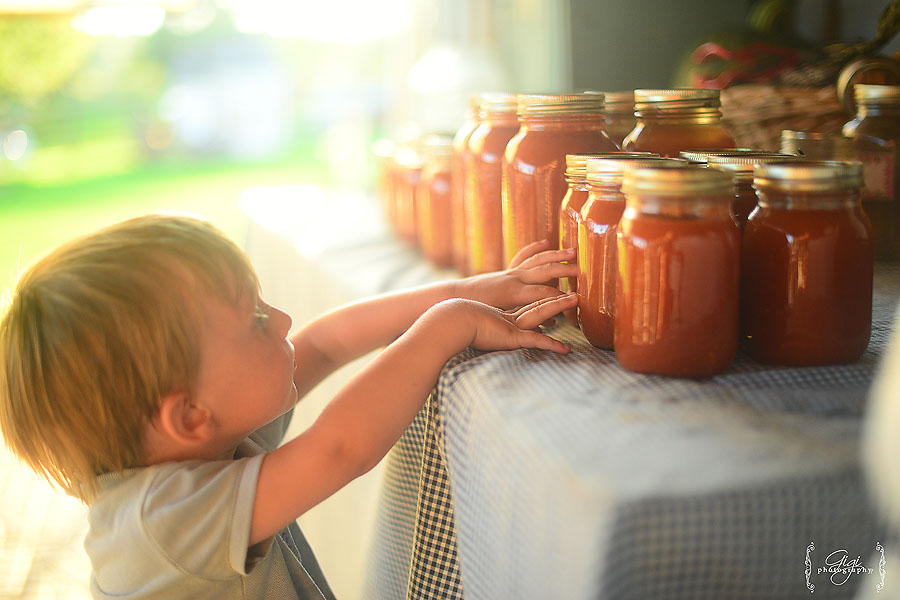
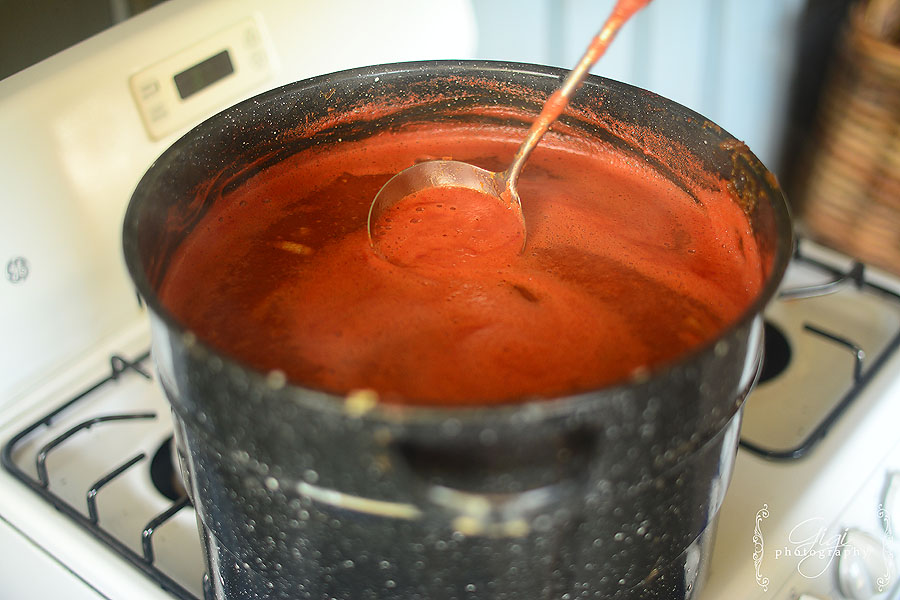
So, why bother?
It’s a lifestyle.
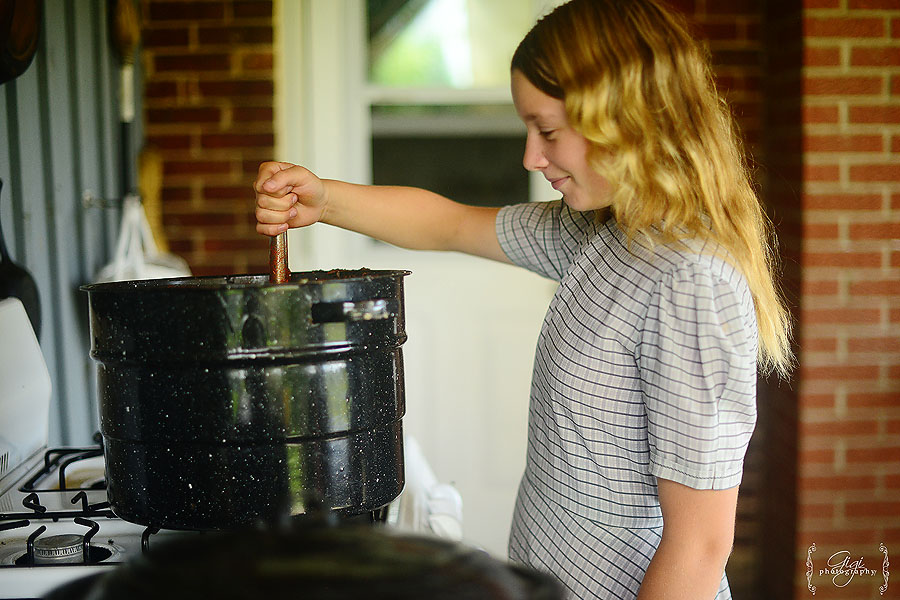
It’s a choice to be different, to eat different, to find sustainability from your own garden or local produce. It’s old fashioned. And most of all, it’s practical. It does not have to be for a large family – it certainly can be just for a married couple or a retired couple – simply prepare less food. It’s a fantastic skill to attain and it will only bless your family and loves ones in return.
It is certainly worth all that hard work – and bother.
Elsie’s Mennonite Ketchup Recipe
3 gallons of tomato juice
7 1/2 tbsp. salt
3 tsp. celery seed
1/4 tsp. cloves
3/4 tsp. cinnamon
3 tsp. prepared mustard
1 tsp. pepper
3 onions
4 1/2 cups of vinegar
6 cups of sugar
9 tbps. of clear jel or Thermflo
Mix salt and tomato juice. Boil down 1/3. Time will vary on this step. Add seasonings. Reserve a cup of the tomato sauce, cooled, for adding the Thermflo. Taste as you go to see what suits your preference. Once reduced enough, add your clear jel or Thermflo to your reserved cup of tomato juice. Stir well and add to the large pot. Process jars in a hot water bath for 15 minutes. Let jars cool and rest for 24 hours before removing rings.

by Gigi
18 comments